- Home
- slideshows
- miscellaneous
- I drove the world's best-selling electric car for a weekend - and I realized why electric cars need more than 200 miles of range
I drove the world's best-selling electric car for a weekend - and I realized why electric cars need more than 200 miles of range
The 2018 Leaf has a 151-mile range.

The Leaf's handling, suspension, and acceleration were adequate, but the brakes were not as responsive as I would have liked, and the vehicle felt like it was shaking slightly when I drove above 70 mph.
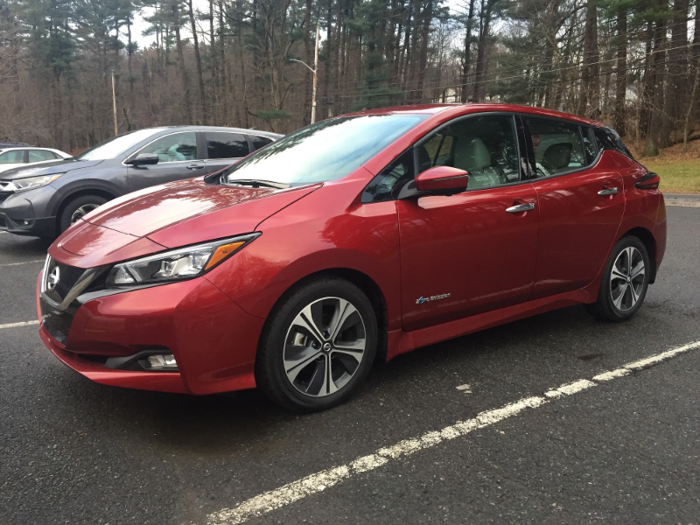
The Leaf's performance and ride quality aligned with my expectations for a car of its size and price range. And like other electric vehicles, the Leaf had a few EV-specific features I wish gas-powered cars could replicate: regenerative braking and an absence of engine noise.
Regenerative braking captures some of the energy typically lost when the brakes are applied and uses it to recharge the battery. If the feature is activated, it will begin to slow the car down more aggressively than a gas-powered car would when you take your foot off the pedal. In some instances, you can control acceleration and braking without touching the brake pedal.
The Leaf received an exterior restyling for the 2018 model year.
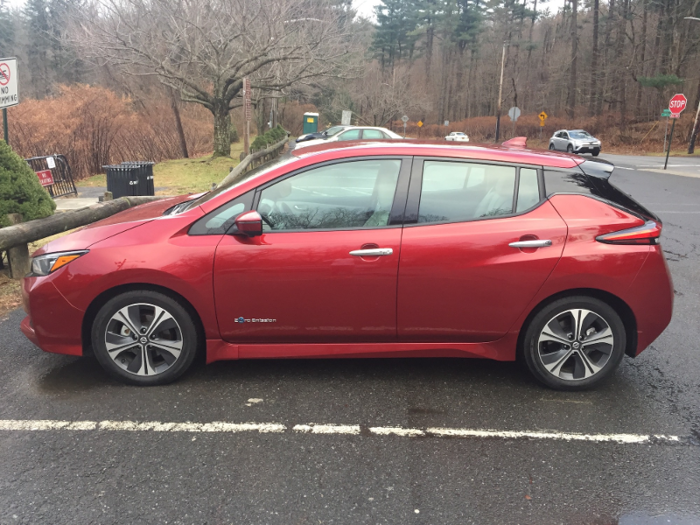
The 2018 model features sportier, sharper contour lines than the original 2011 model, which had a more bulbous profile. I prefer the 2018 version by a wide margin.
Here's what the 2011 Leaf looked like.
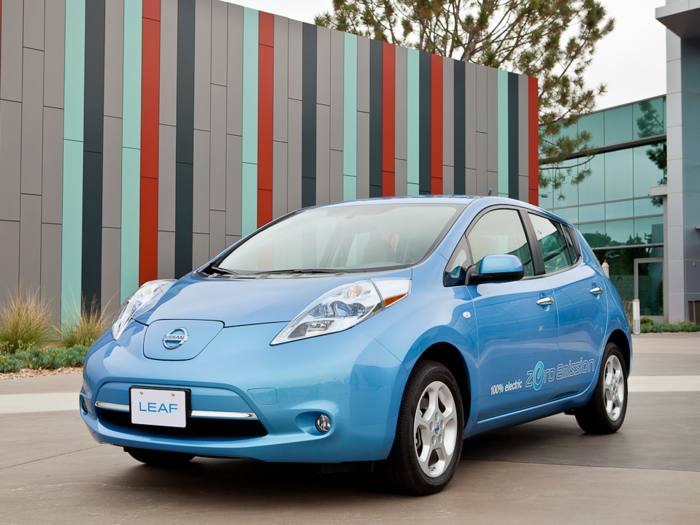
The 2018 Leaf also received an interior restyling.
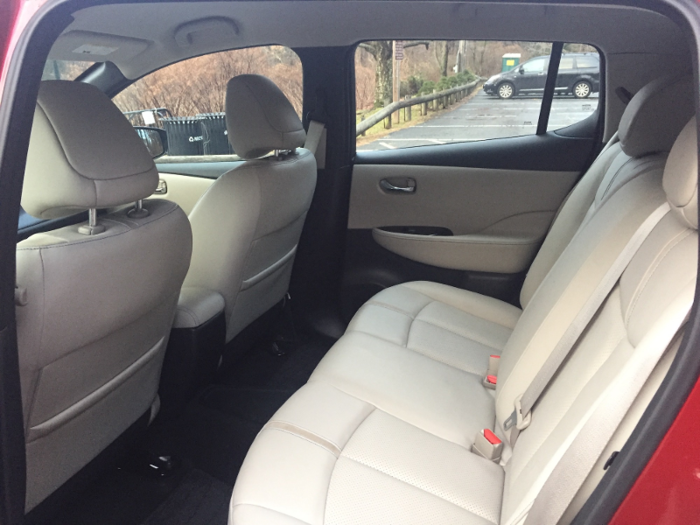
The interior was more comfortable than I expected, though when I sat in the back seat, my head would hit the roof if I leaned back. I'm 5' 11'', so I suspect anyone over six-feet tall would find it difficult to sit in the back seat at all.
The Leaf's infotainment system was simple and fairly intuitive, but it had its limitations.
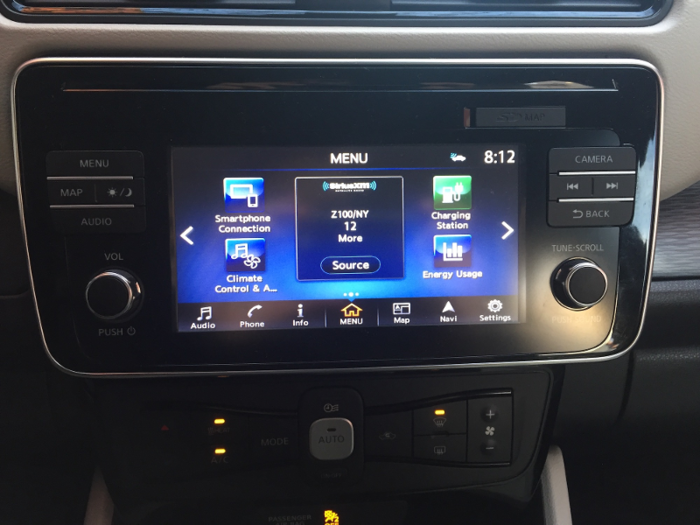
The built-in navigation system worked fine, but I preferred Apple CarPlay since I often struggled to understand how far I was — both in distance and estimated driving time — from my destination when using the Leaf's system.
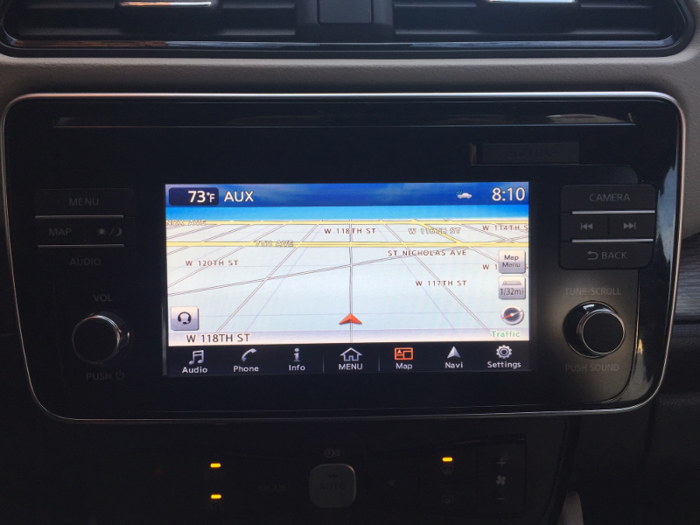
I'm terrible at parallel parking, so I appreciated the Leaf's rear and overhead displays.
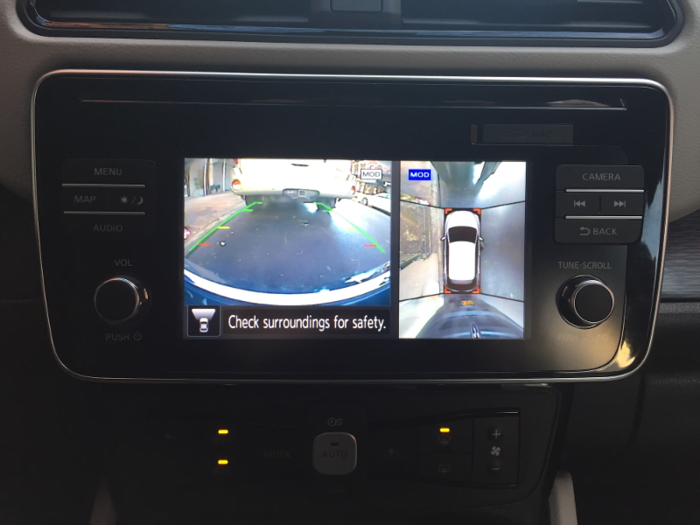
They provided a comprehensive view of my surroundings whenever I put the car in reverse, which made the difficult task of parking on New York City streets slightly easier.
The Leaf I drove also included driver-assistance features, like lane-keep assist, collision-avoidance warning, and blind-spot detection, that I've found incredibly useful whenever I've driven vehicles that included them. While the transportation industry's quest to make fully autonomous vehicles receives more attention, subtle driver-assistance features can also make a significant, and more immediate, impact for drivers.
But Nissan's ProPilot Assist, which can control steering, braking, and acceleration in some situations — but requires the driver's attention at all times — was more of a mixed bag.
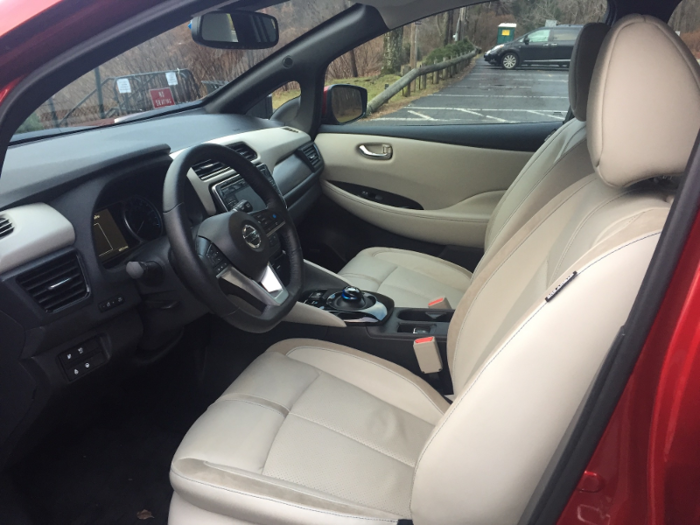
I never felt comfortable with the steering assist function, as it would at times turn off abruptly with only a chime sound to alert me. Sometimes, it would turn off in the middle of or just before a gradual turn on the highway, which meant that I would have to intervene immediately to prevent the Leaf from veering out of its lane. I preferred to control steering myself.
The active cruise control, which handles acceleration and braking, was much more effective, particularly when driving in moderate highway traffic that limited my speed.
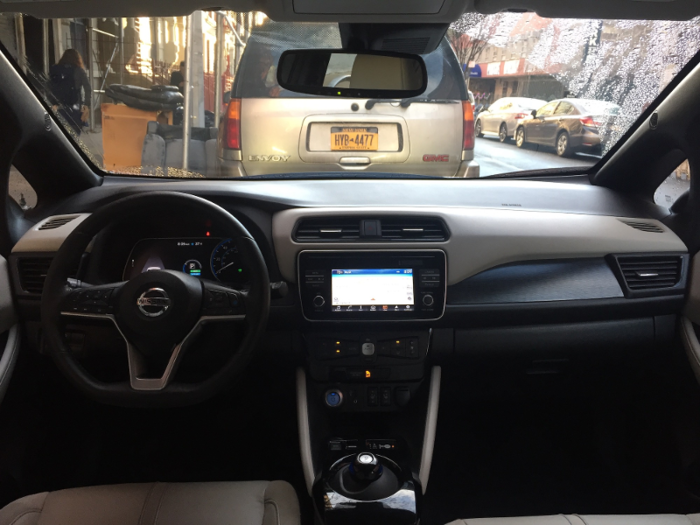
I found that removing the need to brake or accelerate eliminated a significant amount of the stress that comes with driving in moderate or heavy traffic.
The Leaf's biggest problem was its range.
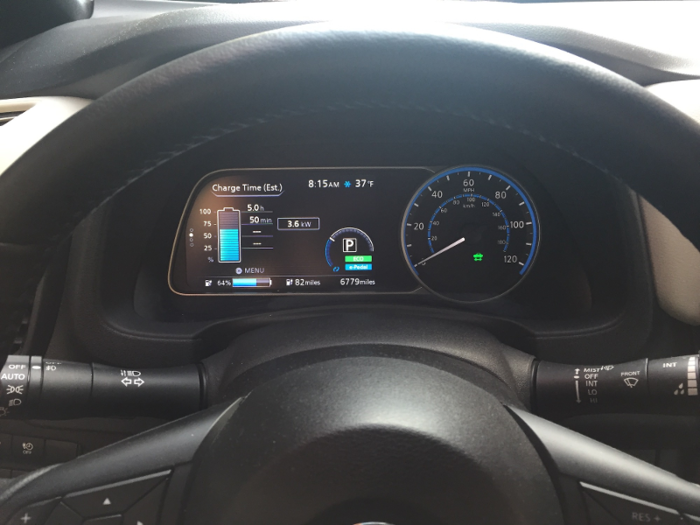
I imagine the Leaf's range would be sufficient if I only needed the vehicle for commutes and errands and had a garage where I could charge it, but over around 10 hours and 181 miles of driving, I charged the vehicle five times for about five-and-a-half total hours.
The temperature during the weekend I spent with the vehicle fell between around 30 and 50 degrees Fahrenheit, which had a notable impact on the Leaf's range.
All electric vehicles suffer from reduced range in cold weather, a phenomenon I experienced on my second full day with the Leaf.
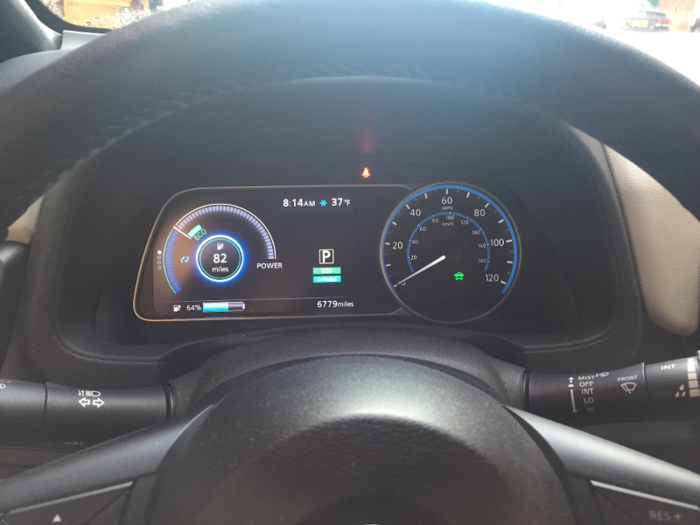
The night before, I charged the Leaf to 84% of its battery capacity before driving it for around 20 miles and parking it for the night. About 13 miles into my trip the next day, the Leaf's range fell under 30%.
As a result, I spent nearly all of my time with the Leaf driving in "eco" mode, which limits acceleration but extends range.
At first, it was difficult to find charging stations.
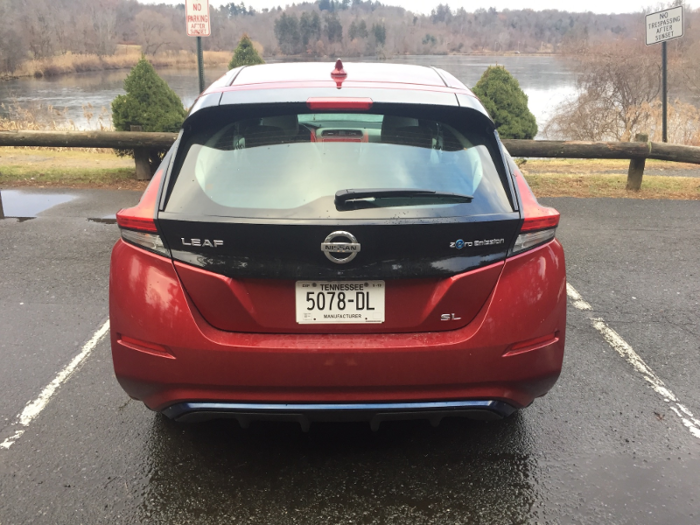
The Leaf's navigation system has a feature that displays and provides directions to nearby charging stations, but it was ineffective. My first attempt at using it directed me to a Nissan dealership that appeared to no longer exist, and my second attempt led me to a large, multi-story indoor parking garage without giving my any indication of where the charger was located.
I eventually gave up and turned to Google Maps, which led med to an easily accessible charging station without any difficulty.
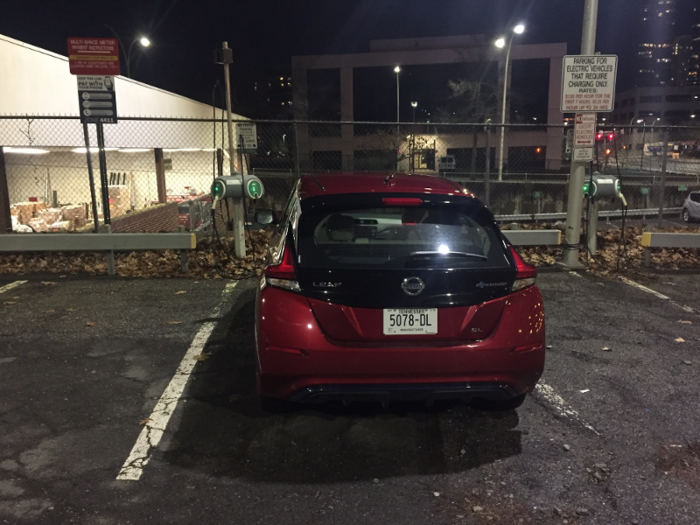
Here's what the Leaf's charge port looks like.
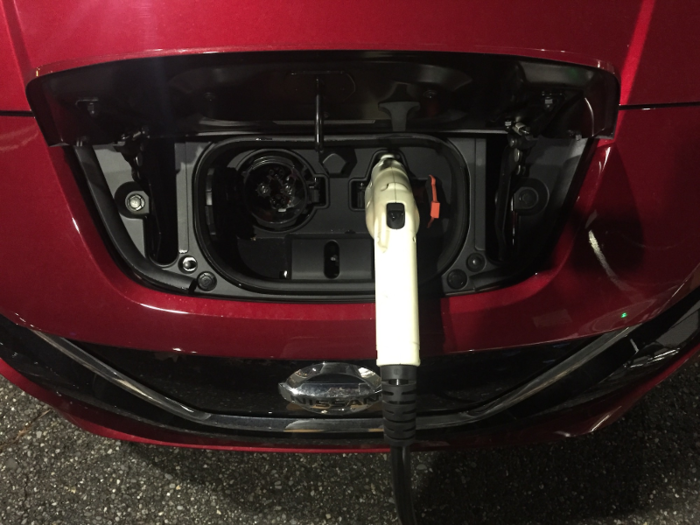
The next day, I began using the ChargeHub app, which allows you to search for nearby charging stations and locate them on a map.
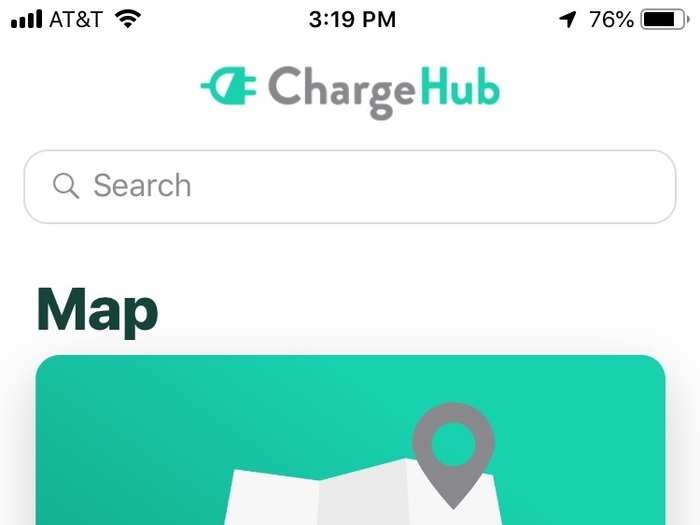
The app also tells you the number of plugs at each station, where the plugs are located, the shape of each plug, how quickly it can charge your car, and how much it costs to charge. The app was far more effective than any other method I'd previously used to find charging stations.
Here's what the ChargeHub map looks like.
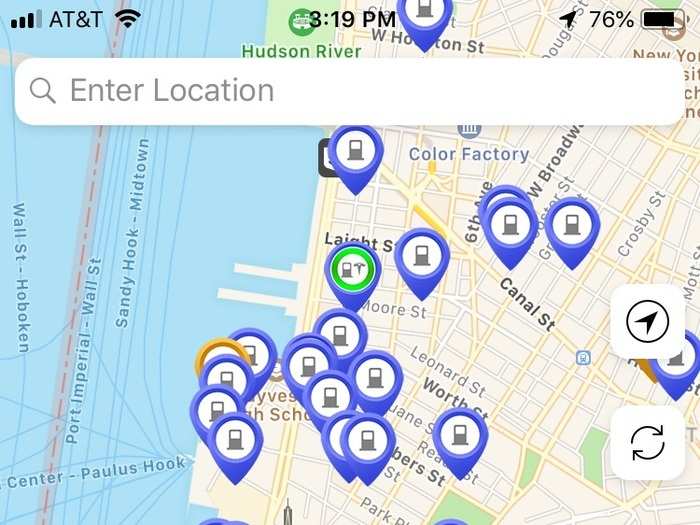
When you choose a station, you're given detailed information about the availability and accessibility of the station's plugs.
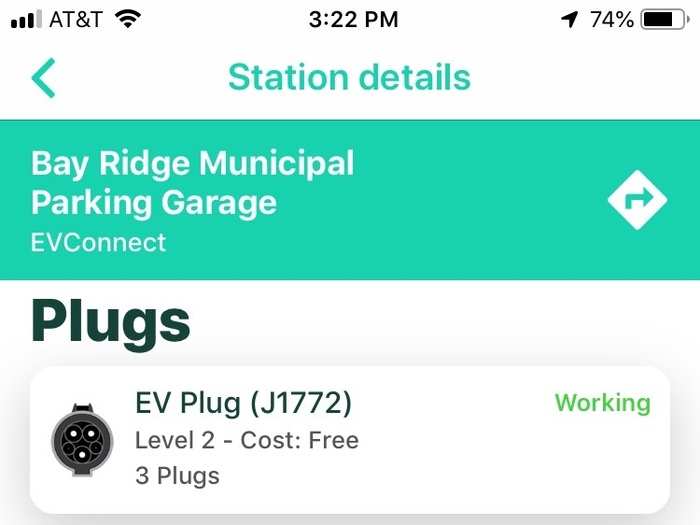
I ended my time with the Leaf with the impression that it's difficult to use an electric vehicle for anything but commuting and errands if it has less than 200 miles of range.
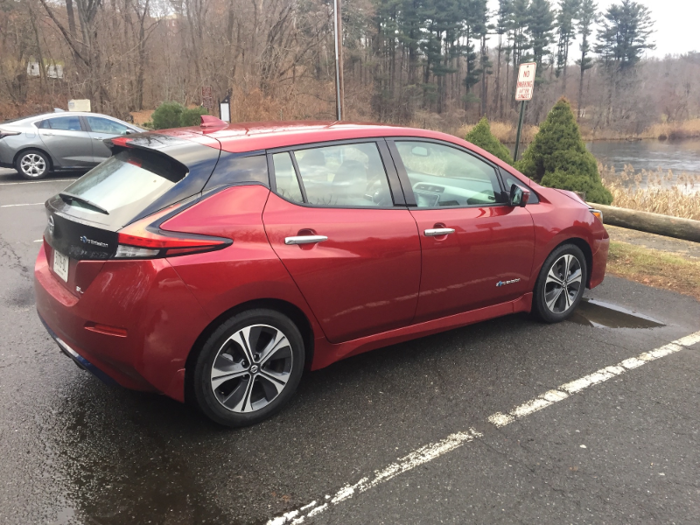
Aside from its low range, the Leaf performed about as I would expect from a vehicle at its price point.
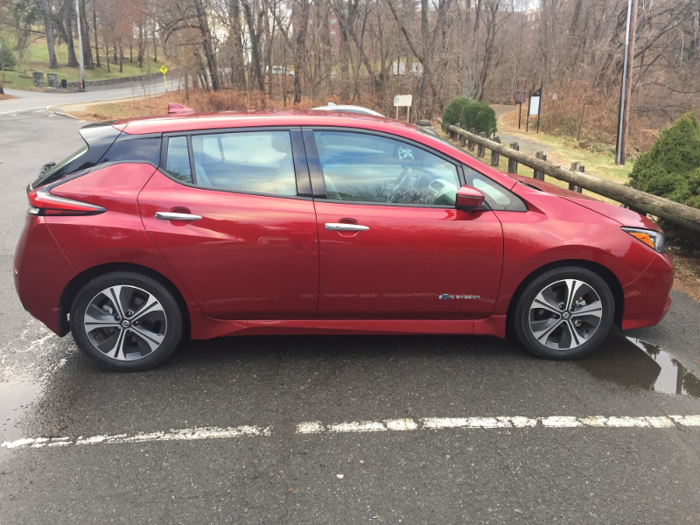
It didn't wow me, but none of my other issues with the vehicle made a significant impact on my driving experience.
Introducing a new version of the Leaf with 75 additional miles of range will give the vehicle an important boost as competitors begin to release affordable, long-range electric vehicles.
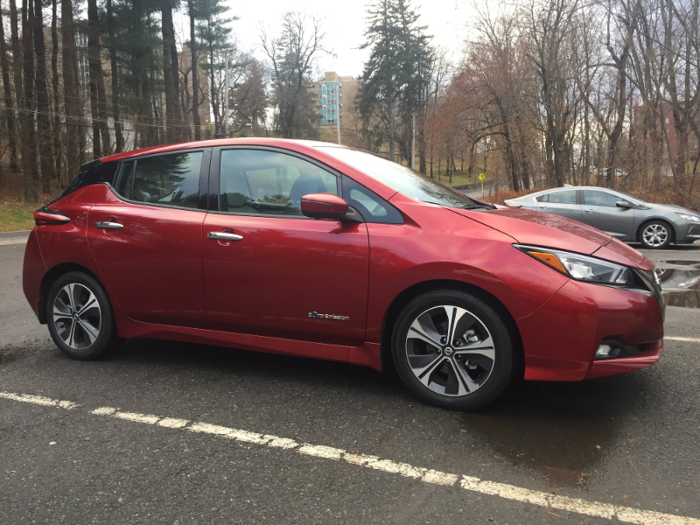
The Leaf e+, pictured below, will arrive in the US in the spring, Nissan says.
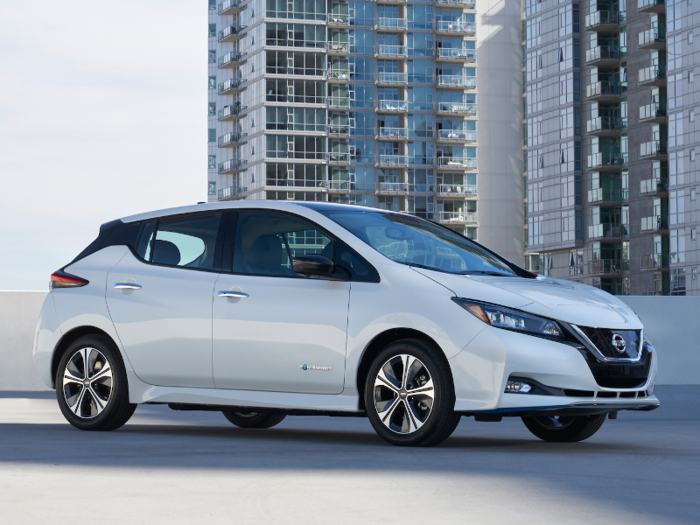
Popular Right Now
Popular Keywords
Advertisement